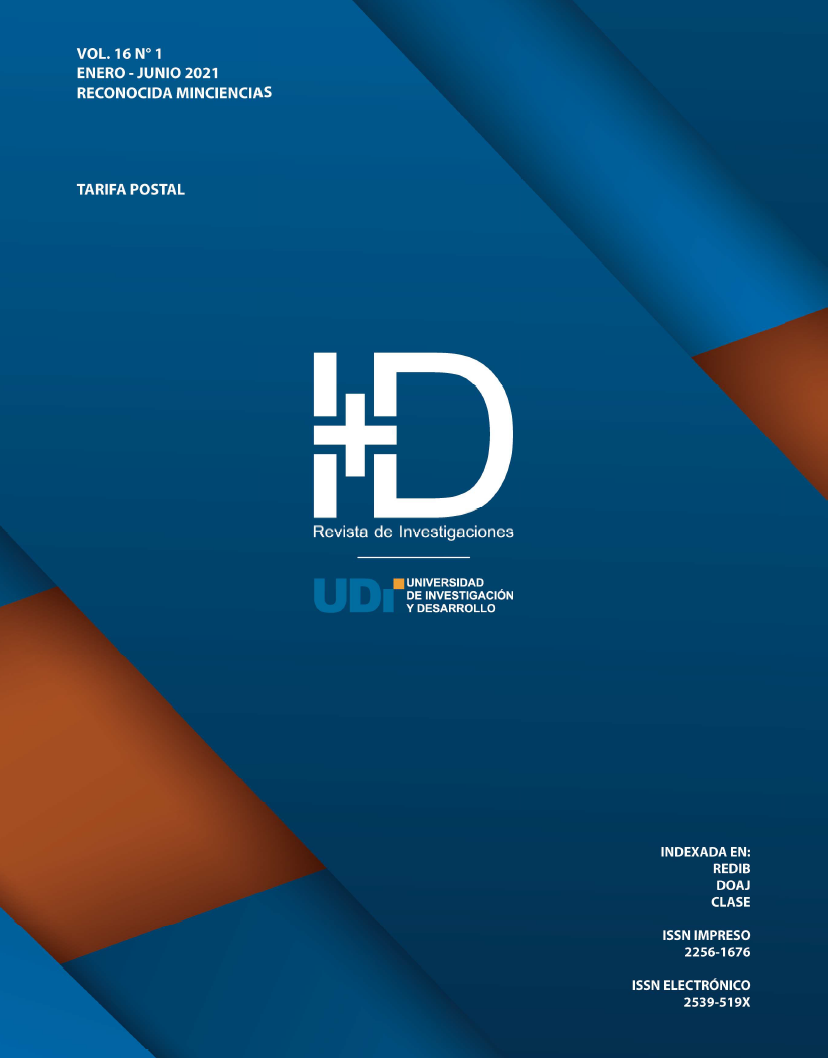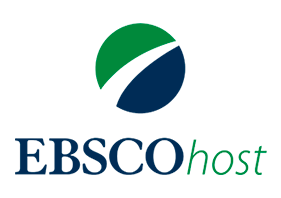Classcraft como herramienta gamificada para la enseñanza de Integración de procesos con tecnología informática
DOI:
https://doi.org/10.33304/revinv.v16n1-2021006Palabras clave:
Classcraft, educación, gamificación, procesos, tecnologíaResumen
Las nuevas tecnologías continúan cambiando esquemas y formas de gestionar información de procesos industriales. Con ellas han surgido también cambios en la forma como la sociedad actual se relaciona, se comunica, cómo entiende las interacciones entre personas, cómo encuentra nuevas motivaciones asociadas al uso de la tecnología. Este trabajo se centra en estudiar la motivación generada en una clase de pregrado universitario a la cual se incorporó una herramienta gamificada estándar en el mercado para la enseñanza y el aprendizaje del curso. Los contenidos de la clase tienen relación directa con la integración de tecnología en los procesos de negocio, y los estudiantes incluidos en la muestra están en quinto año de un programa de ingeniería. Los resultados muestran que los estudiantes prefieren ampliamente una clase gamificada, pero que, al mismo tiempo, algunos de los elementos de la gamificación, entre ellos los que tienen que ver con efectos aleatorios, no son bien percibidos, mientras que los avatares dan sentido al desarrollo de una comunidad virtual con nuevas identidades personales, lo cual llama profundamente la atención de los jóvenes de educación media.Descargas
Citas
Acosta-Medina, J. K., Torres-Barreto, M. L. y Alvarez-Melgarejo, M. (2020). Literature Mapping About Gamification in the Teaching and Learning Processes. Revista ESPACIOS, 41(11), 26. https://www.revistaespacios.com/a20v41n11/20411126.html
Acosta-Medina, J. K., Torres-Barreto, M. L., Alvarez-Melgarejo, M. y Paba-Medina, M. C. (2020). Gamificación en el ámbito educativo: Un análisis bibliométrico. I+D Revista de Investigaciones, 15(1), 30-39. https://doi.org/10.33304/revinv.v15n1-2020003
Aji, T. P. y Napitupulu, T. A. (2018). Effect of Gamification on E-Learning to Support Learning Achievement and Learning Motivation. Journal of Theoretical and Applied Information Technology.
Berchet, C. y Habchi, G. (2005). The Implementation and Deployment of an ERP System: An Industrial Case Study. Computers in industry, 56(6), 588-605.
Bozkurt, A. y Durak, G. (2018). A Systematic Review of Gamification Research: In pursuit of homo ludens. International Journal of Game-Based Learning, 8(3), 15-33. https://doi.org/10.4018/ijgbl.2018070102
Burke, B. (2016). Gamify (1.a ed.). Taylor & Francis Group. https://doi.org/10.4324/9781315230344
Campos, A. (2010). Neuroeducación: Uniendo las neurociencias y la educación en la búsqueda del desarrollo humano. La educ@ación, 143, 1-14.
Comas-Forgas, R. y Sureda-Negre, J. (2010). Academic Plagiarism: Explanatory Factors from Students’ Perspective. Journal of Academic Ethics, 8(2), 217-232. https://doi.org/10.1007/s10805-010-9121-0
Davenport, T. y Short, J. (1990). The New Industrial Engineering: Information Technology and Business Process Redesign. Sloan Management Review.
Dunbar, K. N. (2008). Arts Education, the Brain, and Language. En C. Asbury y B. Rich (eds.), Learning, Arts, and the Brain. The Dana Consortium Report on Arts and Cognition (pp. 81-92). Dana Press.
Estupiñan Ricardo, J., Cherrez Cano, I., Intriago Alcívar, G. y Torres Vargas, R. (2016). Neurociencia cognitiva e inteligencia emocional. La gestión pedagógica en el contexto de la Formación Profesional. Didasc@lia: Didáctica y Educación, 12(4), 207-214.
Foncubierta, J. y Rodríguez, C. (2014). Didáctica de la gamificación en la clase de español. Edinumen.
Frost, J. y Eden, A. (2014). The Effect of Social Sharing Games and Game Performance on Motivation to Play Brain Games. En B. Schouten, S. Fedtke, M. Schijven, M. Vosmeer y A. Gekker (eds.), Games for Health 2014 (pp. 48-55). Springer Vieweg.
Glover, I. (2013). Play As You Learn: Gamification as a Technique for Motivating Learners. Proceedings of EdMedia 2013-World Conference on Educational Media and Technology, 1999-2008.
Hardiman, M. M. (2003). Connecting Brain Research with Effective Teaching: The Brain-Targeted Teaching Model. Scarecrow Press.
Ito, M. (2000). Mechanisms of Motor Learning in the Cerebellum. Brain research, 886(1-2), 237-245.
Kapp, K. M. (2012). Research Says...Games are Effective for Learning. En The gamification of learning and instruction: game-based methods and strategies for training and education (75-103). John Wiley & Sons.
Klock, A. C. T., Gasparini, I. y Pimenta, M. (2019). User-Centered Gamification for E-Learning Systems: A Quantitative and Qualitative Analysis of its Application. Interacting with Computers, 31(5), 425-445. https://doi.org/10.1093/iwc/iwz028
Lobo-Rueda, M. A., Paba-Medina, M. C. y Torres-Barreto, M. L. (2020). Análisis descriptivo de experiencias gamificadas para enseñanza y aprendizaje en educación superior en ingeniería. Revista ESPACIOS, 41(16), 21. https://www.revistaespacios.com/a20v41n16/20411621.html
Marache-Francisco, C. y Brangier, E. (2014). The Gamification Experience: UXD with a Gamification Background. En K. Blashki y P. Isaias (eds.), Emerging Research and Trends in Interactivity and the Human-Computer Interface (pp. 205-223). IGI Global. https://doi.org/10.4018/978-1-4666-4623-0.ch010
Monterrat, B., Lavoué, É. y George, S. (2014). Motivation for Learning: Adaptive Gamification for Web-Based Learning Environments. CSEDU 2014 - Proceedings of the 6th International Conference on Computer Supported Education, 117-125. https://doi.org/10.5220/0004848101170125
Morales, D. y Alfonso, Y. M. (2006). La importancia de promover en el aula estrategias de aprendizaje para elevar el nivel académico en los estudiantes de Psicología. Revista Iberoamericana de Educación, 40(1), 1-17. https://doi.org/10.35362/rie4012532
Nikolopoulos, K., Metaxiotis, K., Lekatis, N. y Assimakopoulos, V. (2003). Integrating Industrial Maintenance Strategy into ERP. Industrial Management & Data Systems, 103(3), 184-191. https://doi.org/10.1108/02635570310465661
Nisbet, J. y Shucksmith, J. (2017). Learning Strategies (1.a ed.). Taylor & Francis Group. https://doi.org/10.4324/9781315188652
Rojas-López, A., Rincón-Flores, E. G., Mena, J., García-Peñalvo, F. J. y Ramírez-Montoya, M. S. (2019). Engagement in the Course of Programming in Higher Education Through the Use of Gamification. Universal Access in the Information Society, 18(3), 583-597. https://doi.org/10.1007/s10209-019-00680-z
Sanabria, A. (2006). Las TIC en el sistema escolar de Canarias: Los programas institucionales de innovación educativa para la integración curricular de las Tecnologías de la Información y la Comunicación. Revista Latinoamericana de Tecnología Educativa-RELATEC, 5(2), 191-202.
Sousa, D. A. (2011). How The Brain Learns. Corwin Press.
Torres-Barreto, M. L. (2014). Los micro mundos virtuales como apoyo al proceso de aprendizaje en la educación media. Encuentro Internacional de Educación en Ingeniería ACOFI 2014.
Torres-Barreto, M. L. (2018). Herramienta didáctica motivacional basada en gamificación y apoyada en TIC para adquirir y aplicar competencias transversales en estudiantes de ingeniería: MOTIVATIC (hal-02166319). https://hal.archives-ouvertes.fr/hal-02166319/
Turkle, S. (1996). Who Am We? Wired Magazine, 4(1).
Wang, K., Bui, V., Petraki, E. y Abbass, H. A. (2018). Human-Guided Evolutionary Story Narration. IEEE Access, 6(3), 13783-13802. https://doi.org/10.1109/ACCESS.2018.2797879
Werbach, K. y Hunter, D. (2012). Level 5: Game Changer: Six steps to gamification. En For the Win: How Game Thinking Can Revolutionize Your Business. Wharton Digital Press. (85-102).
Zichermann, G. y Cunningham, C. (2011). Gamification by Design: Implementing Game Mechanics in Web and Mobile Apps (1.a ed.). O’Reilly Media.











